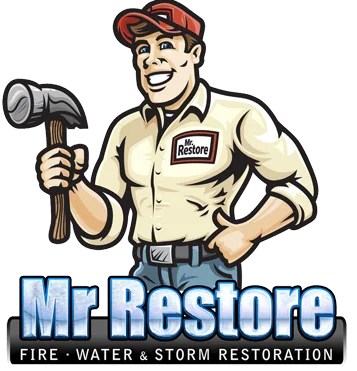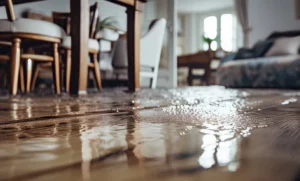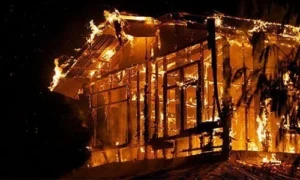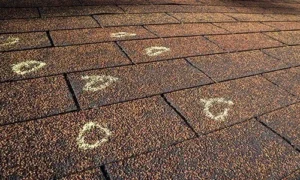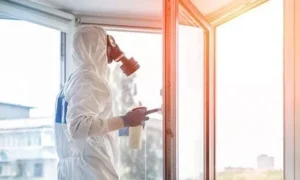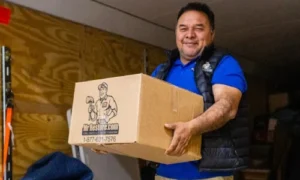Commonly water damage spreads quickly out of control when an issue is left unnoticed for minimally a few weeks. The priority is to act fast when a problem is realized to avoid extensive devastation. With a professional water damage restoration process, the impact on a household can be minimized.
Of all perils, water devastation can compromise the integrity of your property’s structure in a worst-case scenario, and ruin the interior of the home including the walls, ceiling, and flooring plus the furnishings, and personal irreplaceable possessions or documents.
Clearing out and cleaning up can be a significant disruption to standard routines as homeowners are vacated from their properties and usual way of life to remain safe and maintain optimum health and well-being. No one wants to leave their home or their daily routine but many concerns arise with water damage.
The biggest concern of any includes toxic health risks that come from water contamination. These can not only be devastating but long-lasting. The most prominent include mold growth and bacteria along with the deterioration of air quality and infestation of pests.
The solution will be tailored to your circumstances following a professional assessment to discern the extent of the restoration needed.
How To Minimize The Impact Of Water Damage Concerns On A Household
TIP: How Bad Is Water Damage To A House
Water damage is a peril that travels quickly through a household and can do so quickly, often unnoticed. When it’s finally realized the devastation can be great with the biggest concern being the potential for toxic health risks from the contamination.
The effects can be long-lasting with the primary threats being mold growth and bacteria, air quality deterioration, and infestation of pests. With the help of professional water damage restoration services, the devastation can be minimized. Personalized solutions are created after assessments are performed to discern the extent of damage to the property.
The priority with either DIY or professional restoration is to take the necessary steps to avoid the possibility of compromised structural integrity aside from the primary threats posed by the damages. Here are tips on DIY restoration cleanup tips.
1. Drying out
There’s the possibility you could clear out and clean up the water if there’s only minimal damage. Usually, in this case, a mop and bucket will be sufficient unless you have greater than five inches of water, and then a wet/dry vac is essential.
A few steps are necessary to prevent the potential for structural involvement or mold growth including opening the windows and doors so the air can circulate through the space. The fresh air will reduce humidity inside the house and allow faster evaporation of water. Additionally, dehumidifiers and fans can help dry out the area more rapidly.
2. Cleaning and disinfecting
A priority once the area is dry is to sanitize the space as thoroughly as possible. It’s recommended to use a mild soap like laundry or dish detergent along with hot water to break up the grime and dirt that has built up.
After this step, you’ll want to combine a gallon of bleach with 1 gallon of water for a more stringent disinfecting cleaning that will kill pathogens growing in the home. The solution should sit for roughly 30 minutes before being wiped or mopped away.
3. The removal
Damaged materials should be removed. This is a time and effort-intensive step for those handling restoration in a do-it-yourself capacity. If the water was excessive or was left standing for a significant period, longer than 48 hours, things like upholstery, flooring, deteriorated drywall, ceilings, and on.
How Professional Water Damage Restoration Services Work To Minimize Water Damage Concerns
When recognizing that water has intruded on your space and is potentially creating significant household concerns, water damage restoration must be considered immediately. In mild situations, DIY can be an effective solution; however, when there’s excessive water, professional services will be more effective.
An inspection will be performed initially and the process will end with the house in its original-to-you condition. The restoration team’s goal with each step in the water damage restoration process is to properly identify and eliminate water contaminants. Here is how the crew will handle water damage restoration.
1. The inspection
The professional team will perform a detailed inspection using advanced tools and equipment to gain insight into the amount of repair work necessary from minor to extensive. With extensive or “Class 4” damage, the water is so absorbed into the ceiling and floorboards that advanced methodologies and tools will need to be used to remove the materials.
Once the assessment is complete, the specialists will make their recommendations and provide quotes for the suggested repairs. Part of the inspection process involves finding the source of the water intrusion and ensuring that this has stopped.
2. The removal
With an extraction process standing water will be removed in the next phase of water damage restoration services. Standing water can further cause deterioration within the home. That makes it imperative that it be removed immediately especially if you’re dealing with an issue like a flooded basement where mold growth can be a considerable concern.
The high-powered vacuums and pumps rapidly absorb any water from surfaces or in any location its pooling. Once this process is completed, further assessments are done to discern moisture levels and whether flooring should be removed.
3. The drying
After the water has been entirely distracted, restoration teams start drying and dehumidifying the home materials that still contain water, those that are challenging to access with the extraction process.
With this phase, the house might appear dry but some items will still be wet and if left damp, could develop mold or further deteriorate. The area is monitored throughout the process for moisture levels to ensure thorough dryness.
4. The cleaning
The goal of restoration is to retain as much of the personal property as possible. Experts trained in sanitizing and safe cleaning of water-damaged homes can include wet/dry cleaning or spray/wipe cleaning. Some professionals will include immersion, foam, or abrasive methodologies to ensure thoroughness. This can include mold remediation if that’s necessary.
The experts have specialized tools and equipment plus wear the necessary PPE- personal protective equipment allowing them to handle contaminated material and dispose of those that need to be removed at this stage.
Final Thought
TIP: What Are The Consequences Of Floods
In the final step of water damage restoration, removed material or permanent damages are repaired or replaced with minor or extensive reconstruction. The specialists work diligently to bring a house back to its original state prior to the water intrusion.
